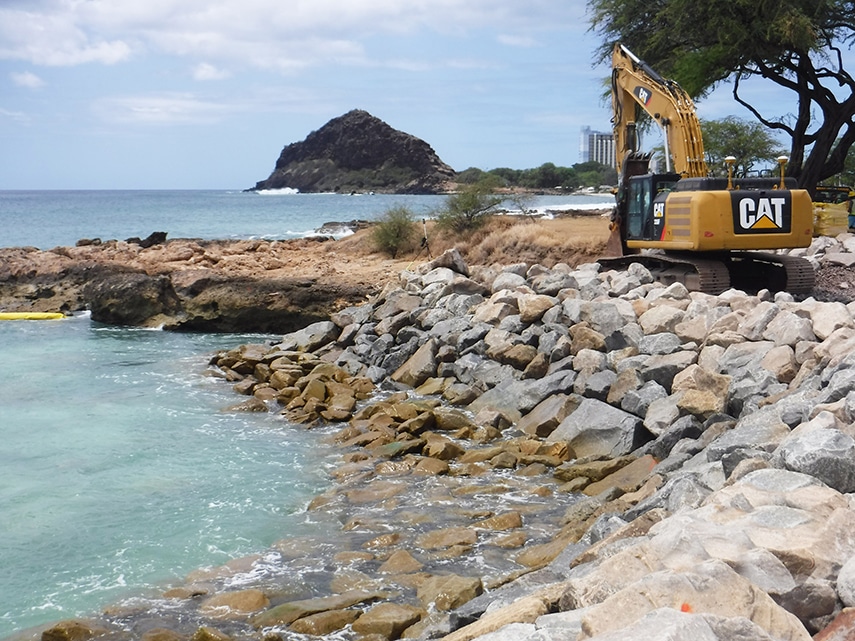
Image Source: Google
Coastal communities around the world are increasingly facing the challenges of rising sea levels and more frequent extreme weather events due to climate change. In order to protect these vulnerable areas, innovative solutions are needed. One such solution is the installation of rock revetments, which can help safeguard coastal communities by reducing erosion and minimizing the impact of storm surges.
The Importance of Resilience
Building resilience in coastal communities is crucial for their long-term sustainability and survival. By implementing proactive measures such as rock revetment installations, communities can mitigate the risks associated with climate change and ensure their safety and well-being. To get more information about rock revetment installation, you may browse this website.
Some key reasons why resilience is important include:
- Protecting infrastructure and property from damage
- Safeguarding human lives
- Preserving natural habitats and ecosystems
- Ensuring economic stability for local communities
What is Rock Revetment?
Rock revetment is a coastal defense structure made up of large rocks or boulders placed along the shoreline to absorb and deflect the energy of waves. These structures act as a buffer, reducing erosion and protecting the coast from the impact of storms. The installation of rock revetments requires careful planning and engineering to ensure their effectiveness. Key features of rock revetments include:
- Durability and longevity
- Natural appearance that blends with the surrounding environment
- Ability to dissipate wave energy and reduce erosion
- Low maintenance requirements
Benefits of Rock Revetment Installation
There are several benefits to installing rock revetments in coastal areas to protect communities and infrastructure. Some of the key advantages include:
- Improved coastal protection: Rock revetments help reduce erosion and prevent coastal flooding by absorbing wave energy.
- Enhanced resilience: By installing rock revetments, coastal communities can increase their resilience to climate change and extreme weather events.
- Cost-effective solution: Rock revetment installations are a cost-effective way to protect coastlines compared to other structural measures.
- Environmental benefits: Rock revetments can provide habitat for marine life and help preserve coastal ecosystems.
- Long-term stability: Rock revetments are designed to last for many years, providing a sustainable solution for coastal protection.
Case Studies: Successful Implementation of Rock Revetments
1. Norfolk, Virginia, USA
- Norfolk, a coastal city in Virginia, implemented rock revetments along its shoreline to protect the city from erosion and storm surges.
- The revetments have successfully reduced coastal flooding and minimized damage to infrastructure and property in the area.
- The project has increased the resilience of Norfolk's coastal community and improved the overall safety of the city.
2. Hornsea, United Kingdom
- The coastal town of Hornsea in the UK installed rock revetments to protect its coastline from erosion and flooding.
- The revetments have helped stabilize the shoreline and prevent damage to properties along the coast.
- The project in Hornsea has demonstrated the effectiveness of rock revetments in safeguarding coastal communities and infrastructure.
Challenges and Considerations
While rock revetments offer many benefits for coastal protection, there are also challenges and considerations that need to be taken into account when planning their installation. Some of the key challenges include:
- Environmental impact: Rock revetments can alter coastal ecosystems and habitats, requiring careful assessment and mitigation measures.
- Maintenance requirements: Regular maintenance is needed to ensure the effectiveness and longevity of rock revetments.
- Costs: The upfront costs of installing rock revetments can be significant, requiring adequate funding and budgeting.
- Community engagement: Input from local communities is essential to ensure that rock revetments meet the needs and expectations of residents.
Conclusion
Rock revetment installations play a crucial role in safeguarding coastal communities from the impacts of climate change and extreme weather events. By providing durable and effective coastal protection, rock revetments help increase the resilience of communities, protect infrastructure, and preserve ecosystems. While there are challenges to consider, the benefits of rock revetments far outweigh the drawbacks, making them a valuable solution for coastal defense. With careful planning and implementation, rock revetments can continue to be a key tool in building resilience and ensuring the safety and well-being of coastal communities around the world.